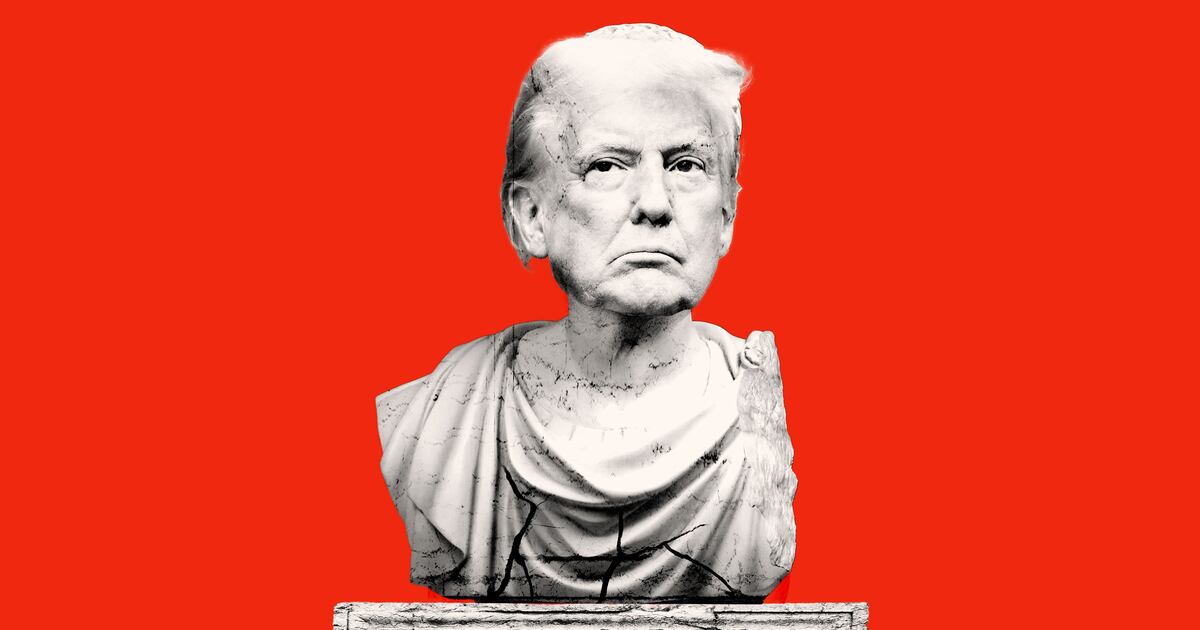Are we now engaged in a new great civil war?
Are we already slipping into an existential battle to the finish between the legions of an inaugurated king who is denounced as illegitimate by foes, and the legions of the defeated pretender, who is decried as criminal by foes?
Two well-built new histories suggest that the tumult we witness in Washington and across the land, with mass protests and volcanic words—scorning the president as a “despot,” calling for a special prosecutor to rescue the Constitution—are in fact tableaus in a drama that has played out repeatedly across the last two thousand years of tragic civil wars.
David Armitage’s Civil Wars: A History in Ideas, and Sidney Blumenthal’s Wrestling with His Angel, 1849-1856: The Political Life of Abraham Lincoln, both paint scenes of discord and despair that would work readily on the TV pundit panels and in the enflamed editorials of this day.
How can you know that you are in a civil war?
Language is a useful guide. Armitage points toward the English poet John Milton who discerned “the poetry of civil war …with its own characteristics and recurrent figures of speech, images, and themes.”
Importantly, signs of contemporary civil war around us are usually so difficult to fix and so dreadful to acknowledge that scholars have found it helpful to study historical civil wars for lessons learned.
Observers during the 17th Century English civil wars, or during the 18th and 19th century French and American civil wars, especially looked to the stories of the Roman civil wars in the 1st Century B.C.E in order to discover past narratives to describe present chaos.
The Roman poet Lucan of the 1st Century B.C.E.—a time ripped by civil wars from Dictator Sulla to Emperor Augustus – presented civil wars with a horror that sounds through twenty-one centuries: “…and of legality conferred on crime we sing, and of/ a mighty people/ attacking its own guts with victorious sword-hand/ of kin facing kin…”
The Roman historian Florus of the 2nd Century C.E. chose metaphors of disaster to portray the Roman civil wars: “The rage of Caesar and Pompey, like a flood or fire, overran the city, Italy, tribes, nations and finally the whole empire…”
In the stormy prelude to the English civil wars, pitting the Puritan regicides against the crown, the English poet Samuel Daniel (d. 1619) echoed Lucan’s construction: “…Whilst Kin their Kin, brother the brother foyles/ Like Ensignes all against like Ensignes band:/ Bowes against bowes,/ the Crowne against the/ crowne,/ whil’st all pretending right, all throwen down.”
Notably there is a surprising recurring reluctance by combatants to admit that a conflict with their kin about the legitimacy of the sovereign is, in fact, a civil war.
After 1789, it became useful to invoke the political construction of a revolution in order to aggrandize a rebellion of rival claimants to sovereignty.
For example, fifty years after Yorktown, James Fenimore Cooper argued against the popular notion of an American Revolution: “The dispute between England and the United States of America, though not strictly a family quarrel, had many of the features of a civil war…”
In early 1863, Francis Lieber, Prussian-American professor of law, published a legal code of conduct for war-fighting, defining a civil war carefully, “Civil war is a war between two or more portions of a country or state, each contenting for the mastery of the whole, and each claiming to be the legitimate government…”
Later in 1863, Abraham Lincoln was bold in his Gettysburg Address to assert that what was routinely denounced by the North as a “war of rebellion” and argued by the South to be a “war of secession,” was, in fact, “a great civil war.”
It wasn’t until 1907 that the U.S. Congress agreed to call the war of 1861-1865, “the Civil War.”
What I learn from Armitage and Blumenthal is that the most telling condition that suggests strongly that you are engaged in a civil war is when you find yourself part of a “mighty people” who are faced with two claims of legitimacy, two crowns that are “pretending right” —two camps with “the rage of Caesar and Pompey.”
In 1850, the failing Senator John C. Calhoun of South Carolina used his last days to promote his defiant vision to create two presidents of the United States, one for the North’s Abolitionists, one for the South’s slaveholder Ultras, in order to “restore to the South, in substance, the power she possessed of protecting herself before the equilibrium between the sections was destroyed by the action of the government…”
Ten years later, Calhoun’s devious protégé, Senator Jefferson Davis of Mississippi, took up the two presidencies invention and led the South’s “slave power” into the catastrophe of the Confederacy.
A glance at today’s news from Washington suggests that there are a few of the same shadows of civil war in 2017 that the Roman Senate could sense when Sulla marched on Rome in 88 BCE, or when the English Rump Parliament declared itself “the supreme power in the nation” in 1649, or when South Carolina’s Ultras opened fire on Fort Sumter in 1861.
Was the election of 2016 stolen by a foreign power in league with a troublesome prince?
Is the legitimate chief executive the candidate who won the popular vote by 2.8 million ballots?
Is the Constitution in peril of failure because of Russian meddling, Congressional chicanery, an illegitimate sovereign?
In 1856, the troubled Lincoln sat awake pondering the lesson in the Gospel of Mark, “And if a house is divided against itself, that house will not be able to stand.”
Lucan offers us an even more unsettling lesson after two thousand years of divided houses, “What madness was this, O citizens?”






